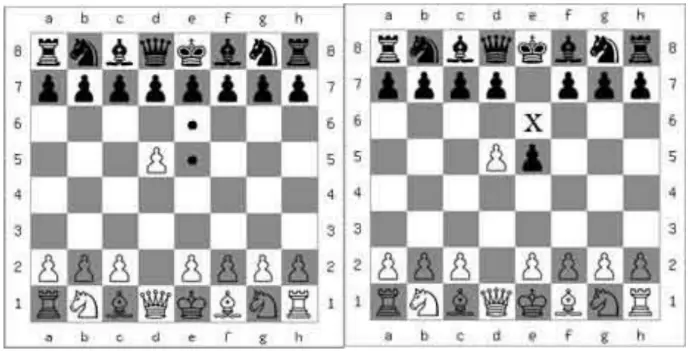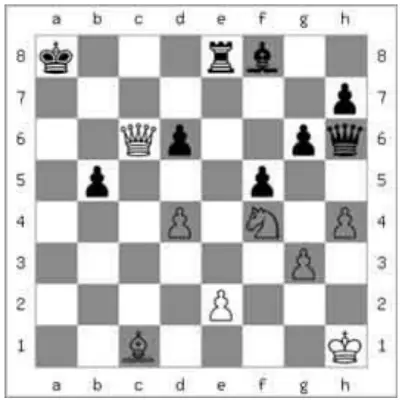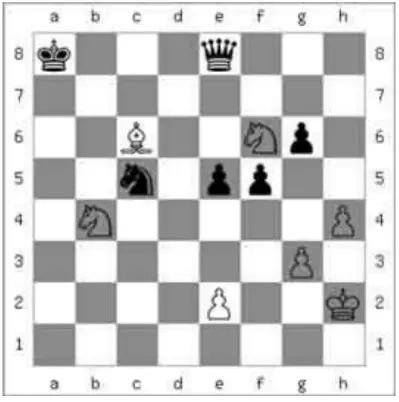Chess tactics are the game-changing maneuvers that can turn the tide in your favor. They’re the key to outsmarting your opponent and achieving victory.
From classic tactics like pins and forks to powerful moves like skewers and discovered attacks, mastering these common chess tactics is essential for improving your game.
In this article, I’ll introduce you to some of the most basic yet exciting chess tactics that can give your game a winning edge. Chess tactics are all about making quick, strategic moves to reshape the course of your game. Let’s explore them step by step.
Most Basic Chess Tactics
1. En Passant
En Passant is a relatively unknown maneuver, often overlooked by novice players. Normally, pawns can only capture an opponent’s piece if it occupies a diagonal position directly in front of them to the left or right. However, in the case of En Passant, a pawn situated on the 5th rank can make a capture even when the opposing pawn advances two squares forward in a single move.

When the white pawn is positioned on the 5th rank and the black pawn advances two squares to e5, it creates a scenario where the White player can utilize the En Passant rule to capture the black pawn, as demonstrated in the diagrams above.
2. Castle

Castling is a unique chess move, allowing players to move more than one piece simultaneously. Its primary purpose is to safeguard the king by swapping positions with a rook on the same side of the board.
However, there are several restrictions associated with this move:
- There must be no pieces situated between the king and the rook.
- Neither the king nor the rook involved in castling should have made any prior moves in the game.
- The king must not be under the threat of a “check” from an opponent’s piece at the time of castling.
3. Knight Fork

A knight fork is a tactical maneuver in which your knight simultaneously threatens two different opponent pieces.
This tactic holds significant power because the knight’s unique movement pattern distinguishes it from other chess pieces. An additional advantage of employing this tactic is the potential to capture a more valuable piece such as a rook or queen using your knight.
It’s crucial, however, to ensure that one of the targeted pieces in the fork is not the opponent’s knight, as this would result in the loss of your own knight. Developing the ability to spot these opportunities throughout a game can be a game-changing move that shifts momentum in your favor.
4. Queen Fork

A queen fork involves the strategic threat of two opponent pieces using your queen. The queen ranks as the second most valuable piece on the chessboard, following the king.
Therefore, it’s imperative to exercise caution when employing the queen fork, as sacrificing a valuable piece like the queen in exchange for a less valuable one such as a bishop or knight is generally unwise. Ideally, you should aim to target either two unprotected opponent pieces or a king and an unprotected piece.
Targeting a well-defended piece could lead to the loss of your queen, which would be highly advantageous for your opponent. When used judiciously, the queen fork has the potential to set the stage for a checkmate shortly after the ensuing exchanges.
5. Bishop Fork

A bishop fork, as the name suggests, means using your bishop to threaten two of your opponent’s pieces. This is a powerful move that can help you capture one of your opponent’s pieces. However, be careful not to target your opponent’s bishop or queen, as that could result in you losing your bishop. So, use this tactic carefully to get better results.
6. Rook Fork

A rook fork is when you use the rook to threaten two of your opponent’s pieces. It’s best to aim for two pieces that aren’t protected or the king and one unprotected piece. The rook fork is a good move because the rook can cover a whole line of squares.
But make sure you don’t target your opponent’s rook or queen, as that could lead to your rook being captured. So, use this tactic carefully, considering that the rook is a valuable piece too.
7. Arranging A Pin
Creating a pin is a strategic move in chess. When you threaten one of your opponent’s pieces, they typically have two choices:
- Move the piece under threat.
- Place another piece in between the threatened piece and your attacking piece.
When they choose the second option, it’s called “pinning.” Pinning can neutralize the threat, but it has a significant drawback. The pinned piece becomes immobilized as long as the threat persists. In essence, by using the pinning strategy, a player renders one of their own pieces inactive.
There are two main types of pins:
- Absolute pin
- Relative pin
Now, let’s delve into these types in more detail:
Absolute Pin

An absolute pin happens when this sequence of events occurs:
- You use one of your pieces to threaten the opponent’s king.
- The opponent places one of their pieces between your piece and their king.
- By doing this, the opponent is forced to keep the pinned piece in place because moving it would result in their king being in check.
When the piece that’s under threat is the opponent’s king, it’s called an absolute pin. Look at the example in the diagram above. The black player’s bishop on f8 acts as an absolute pin to protect their king from being checked by the white queen. To see how effective an absolute pin can be, think about what would happen if the white knight on c6 moved to e7 in this situation.
Relative Pin

A relative pin works like an absolute pin, but there’s a difference: in a relative pin, the piece being threatened isn’t the opponent’s king. Here’s how it works:
- You use one of your pieces to threaten an important piece of your opponent’s, like a queen or rook (as shown in the example above).
- The opponent places one of their pieces between your piece and their valuable piece.
The results of a relative pin are similar to those of an absolute pin. Your opponent can’t move the pinned piece. However, it’s not as serious as an absolute pin because your opponent might choose to give up the threatened piece and move the pinned piece instead.
These are some commonly used chess tactics. Using them wisely can definitely help you improve your chances in the game.


